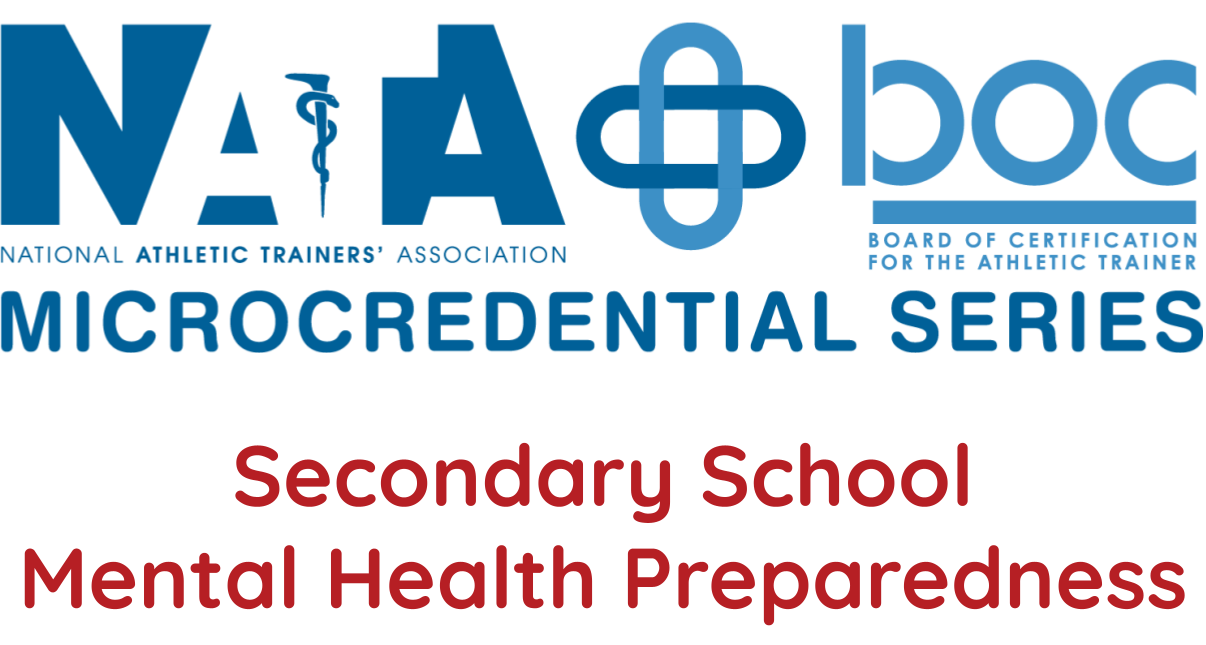
NATA Position Statement - Emergency Action Plan Development and Implementation in Sport
-
Register
- Non-member - $18.75
- Member - $11.25
- Student - $11.25
- Staff - Free!
- Certified Student - $11.25
- Retired - $11.25
This presentation is part of the Executive Council for Education’s 2025 Strategic Issues in Athletic Training District Lecture Series.
Abstract:
An emergency action plan (EAP) is a written document indicating the preparations and onsite emergency response for any type of injury in the pre-hospital setting. An EAP is developed to respond to any type of catastrophic injury and should not be injury/illness specific. The original Emergency Action Plan position statement was published in 2002 and many advancements to emergency planning have been made since then. Unfortunately, less than 10% of athletic trainers surveyed stated they have comprehensive EAPs (inclusive of the components outlined in the 2002 position statement). Further, we often hear athletic trainers using incorrect terminology when referring to their EAP vs policies and procedures. The 2024 NATA position statement provides updated recommendations for emergency action plan development and implementation. The new position statement outlines recommendations for optimizing patient outcomes, development, implementation and response. This program will incorporate opportunities within the recording for participants to pause the recording and complete an active learning activity. The activities will include participants reviewing their own emergency action plan with a checklist and then a workbook to help them get started to improve their EAP.
Learning Objectives:
- Understand the landscape of emergency action plans, including being able to summarize the current literature on EAPs
- Analyze their organization’s EAP for the inclusion of best practices using a checklist
- Apply the knowledge gained to begin to improve their organizations through a workbook approach to improving component adoption
Level:
Essential
Domain(s):
Domain 3: Critical Incident Management
Domain 5: Health Care Administration and Professional Responsibility
CEUs:
0.75 Category A
Keywords: Emergency action plans, development, catastrophic injury, emergent, care, healthcare administration
Course Expiration:
This premium course offering must be completed within 12 months from the purchase date.

Created in collaboration with the NATA Foundation Educational Resources Committee.
A portion of the proceeds from this course is donated to the NATA Research & Education Foundation.
Samantha Scarneo-Miller, PhD, ATC
Dr. Samantha Scarneo-Miller serves as an Assistant Professor and Program Director for the Master of Science in Athletic Training in the Division of Athletic Training, School of Medicine at West Virginia University. Her overall research goal is to prevent unnecessary deaths from participation in sport through the administration of healthcare administration documents. Ultimately, she aims to make it easier for athletic trainers to save more lives.
She has published over 50 research articles in various areas with a majority of her research focusing on emergency action plans and policies and procedures. Dr. Scarneo-Miller has presented at several state, district and national meetings and is also a recipient of several grants including a NIH Loan Repayment Award.
Dr. Scarneo-Miller received her bachelors degree from the University of New Hampshire, and graduate degrees from UConn. She also served as the Vice President for the Korey Stringer Institute. She and her partner, Jelan, live in Morgantown with their sons Jrue and Jovi and dog Milo.
Yuri Hosokawa, PhD, ATC, FACSM
Waseda University, Japan
Yuri Hosokawa is an Associate Professor at the Faculty of Sport Sciences, Waseda University, Japan. Her research interests include prevention and education of sudden death in sport, establishing best practices in road race medicine, developing regional-specific heat guidelines for exertional heat illness prevention, and developing heat acclimatization guidelines for tactical athletes. She is also partaking in research projects in biometeorology to promote interdisciplinary research across physiologists, climatologists, and public health researchers.
Dr. Hosokawa served as a member of the International Olympic Committee Adverse Weather Impact Expert Working Group for the Olympic Games Tokyo 2020 and led the effort to implement best practices for prehospital care of exertional heat stroke in Japan. She established and coordinated prehospital exertional heat stroke management plans for seventeen disciplines during the Olympics and five disciplines during the Paralympics that were deemed high risk for exertional heat stroke. Tokyo Games marked Japan’s first mass-sporting event to implement evidence-based exertional heat stroke prehospital care. Hosokawa’s effort set the standard for future athlete medical service and showcased the expertise of athletic trainers in Japan.
Dr. Hosokawa currently serves as a heat advisor for the Japan Coast Guard, Fifth Regional Coast Guard, to optimize the resilience of the special rescue team. She is also a member of the Expert and Advisory Board of the World Athletics’ World Academy for Endurance Medicine and the World Lacrosse Medical Commission.
Dr. Hosokawa received her bachelor’s degree in Sport Sciences from Waseda University in 2011, her master’s degree in Athletic Training from the University of Arkansas in 2013, and her doctoral degree from the University of Connecticut in 2016. She then completed a postdoctoral fellowship at the Korey Stringer Institute (2016–2017) and worked at the Ritsumeikan University as an Assistant Professor in the College of Health and Sport Science (2018–2019).

